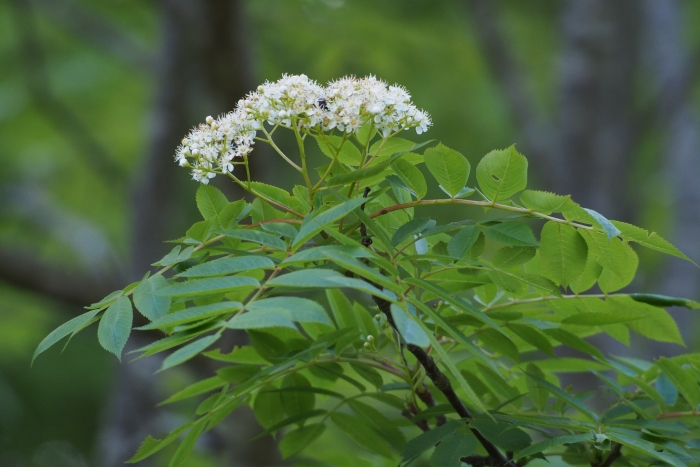Japanese Rowan
(Sorbus commixta)
Japanese Rowan (Sorbus commixta)
/
/

© harum.koh
CC BY-SA 4.0
Image By:
© harum.koh
Recorded By:
Copyright:
CC BY-SA 4.0
Copyright Notice:
Photo by: © harum.koh | License Type: CC BY-SA 4.0 | License URL: http://creativecommons.org/licenses/by-sa/4.0/ | Uploader: harumkoh | Publisher: iNaturalist |
























Estimated Native Range
Summary
Sorbus commixta, commonly known as Japanese Rowan, is a deciduous tree native to Japan, the Korean Peninsula, and the Russian Far East, including Sakhalin. It is often found in cool temperate forests, on mountain slopes, and in volcanic soils, where it contributes to the local ecology by providing food for birds and other wildlife. The tree typically grows to a height of 23-33 feet (7-10 meters) and is noted for its compound pinnate leaves that turn a striking deep purple or red in the autumn.
The Japanese Rowan is valued for its ornamental features, including the clusters of white flowers that bloom in late spring to early summer and are moderately showy. These are followed by bright orange to red pomes (fruit), which persist into winter and provide visual interest as well as a food source for birds. The tree is often used in urban and residential landscapes for its beautiful fall color and its ability to adapt to a range of soil conditions, though it prefers moist, well-drained soil. It requires full sun to part shade and is relatively low-maintenance once established. Popular cultivars include ’Embley’, which has particularly vibrant autumn foliage and has been awarded the Royal Horticultural Society’s Award of Garden Merit, and ’Serotina’, which is noted for its late-flowering habit. While generally disease-resistant, Japanese Rowan can be susceptible to fireblight and canker diseases. It is also important to note that it can be sensitive to urban pollution.CC BY-SA 4.0
The Japanese Rowan is valued for its ornamental features, including the clusters of white flowers that bloom in late spring to early summer and are moderately showy. These are followed by bright orange to red pomes (fruit), which persist into winter and provide visual interest as well as a food source for birds. The tree is often used in urban and residential landscapes for its beautiful fall color and its ability to adapt to a range of soil conditions, though it prefers moist, well-drained soil. It requires full sun to part shade and is relatively low-maintenance once established. Popular cultivars include ’Embley’, which has particularly vibrant autumn foliage and has been awarded the Royal Horticultural Society’s Award of Garden Merit, and ’Serotina’, which is noted for its late-flowering habit. While generally disease-resistant, Japanese Rowan can be susceptible to fireblight and canker diseases. It is also important to note that it can be sensitive to urban pollution.CC BY-SA 4.0
Plant Description
- Plant Type: Tree
- Height: 20-30 feet
- Width: 20-30 feet
- Growth Rate: Moderate
- Flower Color: White
- Flowering Season: Spring
- Leaf Retention: Deciduous
Growth Requirements
- Sun: Full Sun, Part Shade
- Water: Medium
- Drainage: Fast, Medium, Slow
Common Uses
Bird Garden, Border Plant, Low Maintenance, Showy Flowers
Natural Habitat
Cool temperate forests, mountain slopes, and volcanic soils
Other Names
Common Names: Japanese Rowan, Japanese Mountain Ash, Korean Mountain Ash
Scientific Names: , Sorbus commixta, Pyrus americana var. micrantha, Pyrus americana var. micrantha, Pyrus americana var. rufoferruginea, Pyrus americana var. rufoferruginea, Pyrus aucuparia var. japonica, Pyrus aucuparia var. japonica, Pyrus commixta, Pyrus commixta
GBIF Accepted Name: